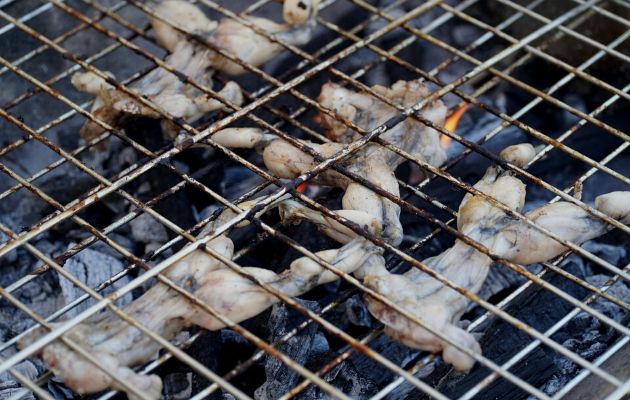The gastronomy of the state of Oaxaca, southern Mexicoit is so vast and varied that in this season borrowed There are traditional dishes that adapt to this Catholic tradition which suggests that the faithful do not eat meat during the six Fridays preceding Holy Week.
Internationally, dishes such as Oaxacan mole, tlayuda or locusts have been presented in international gastronomic competitions taking first place, but there are new, nutritious and economical options such as roasted frog or in stock or consommé.
“Eat a frog and carry a trout”, is the name of the aquaculture farm Las Juntas, which exhibits its dishes prepared with a frog of the species known as “bull frog” (lithobates catesbeiianus), which is cultivated in Santiago Textitlán, in Sierra Sur in Oaxaca.
“We produce bullfrogs, we have the legs there for breeding and we fatten them, and we also have them for sale for meals and they are prepared very quickly,” Teresa García, who works on the farm, explained to EFE.
For example, a woman cooked a frog from a mobile space in the Plaza de la Danza in Oaxaca City, where Tianguis Acuícola y Pesquero 2023 is being held.
From a plastic bucket, he took out one of the dozens of frogs that had traveled up to five hours for a gastronomic sample and that had been sacrificed in advance. Its appearance, fresh and bright, determines the quality of the product.
“First the entrails are removed and it can be prepared with or without the skin, now it is skinless, we remove the arms and legs and marinate in lemon juice seasoned with garlic, pepper and oregano and grill on coals for 15 minutes and it is ready to be served with tomato slices, cucumbers and carrots,” says the woman.
A nutritious and economical alternative
Although it is a dish that was traditionally consumed in Oaxaca, mainly in the geographical regions of Coast, Sierra Sur and Central Valleys where the city of Oaxaca is located, new generations do not know it and when they see its preparation, they consider the dish exotic.
This food is rich in nutrients and best of all, it is very economical, considering that the price of eggs and chicken increased in Mexico in February.
“It is a food very rich in collagen that is used for rejuvenation, it is also recommended for people who have problems with arthritis or diabetes because its meat has very little triglycerides and cholesterol,” said the 40-year-old cook, also the head of the family
As for the price, a kilogram costs 220 pesos (about 12 dollars), and there are seven or eight frogs.
Alternative against migration
Santiago Textitlán, where the farm is located, is a municipality located in the Sierra Sur region of Oaxaca where violence caused by agrarian problems has worsened poverty in the last 30 years and, because of this, Teresa considers this work to be a unique alternative for women in the region whose families break up due to migration to the northern states of Mexico or the United States.
The woman said that farming bullfrogs “doesn’t require a lot of water, unlike trout and mojarra farms. It is also an alternative to create jobs in the area, there are about 10 permanent jobs at the farm, it is a job for me and we are currently producing between 40 and 50 kilograms per month,” says Tereza.
The preparation of the monkfish is watched with amazement by dozens of people who come to Aquaculture and Fisheries Market 2023 eat and buy organic products such as honey, grasshoppers and chocolate offered by 12 producer cooperatives in Oaxaca, but what attracts the most attention is this unique dish.
“Oaxaca has an infinite number of climates and ecosystems, in them we can find the potential to produce species such as the frog that is considered an exotic food, but it is not.”biologist Juan Antonio Ortega, director of fisheries and aquaculture of the Oaxaca government’s agriculture and nutrition development secretariat, explained to EFE.
Don Moisés, who is originally from the Zapotec community, arrived at the tables of the tianguis and did not miss the opportunity to taste frog soup, a food that was part of his diet.
“It is little known, but since I ate a frog as a child and now I saw that they were selling it, I said: now is the time, because it is no longer customary to eat it, that practice has been lost,” he said. concluded.
Source: Panama America
I am Jason Root, author with 24 Instant News. I specialize in the Economy section, and have been writing for this sector for the past three years. My work focuses on the latest economic developments around the world and how these developments impact businesses and people’s lives. I also write about current trends in economics, business strategies and investments.








